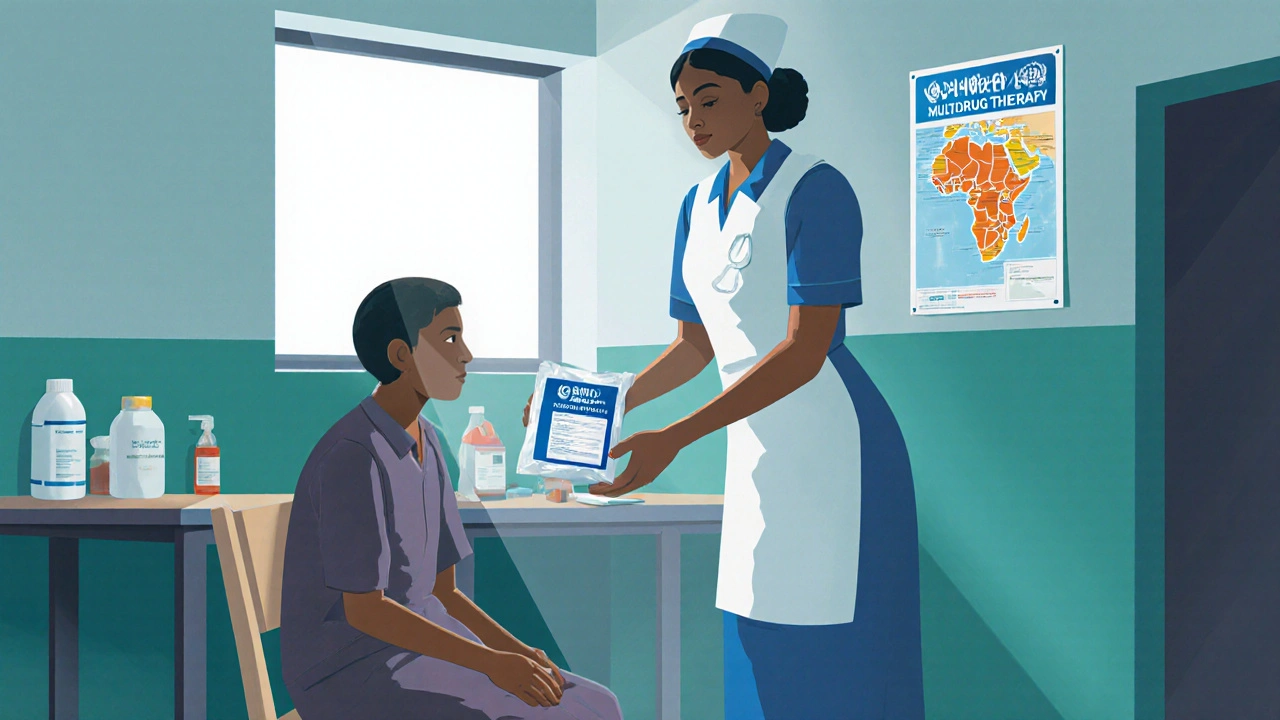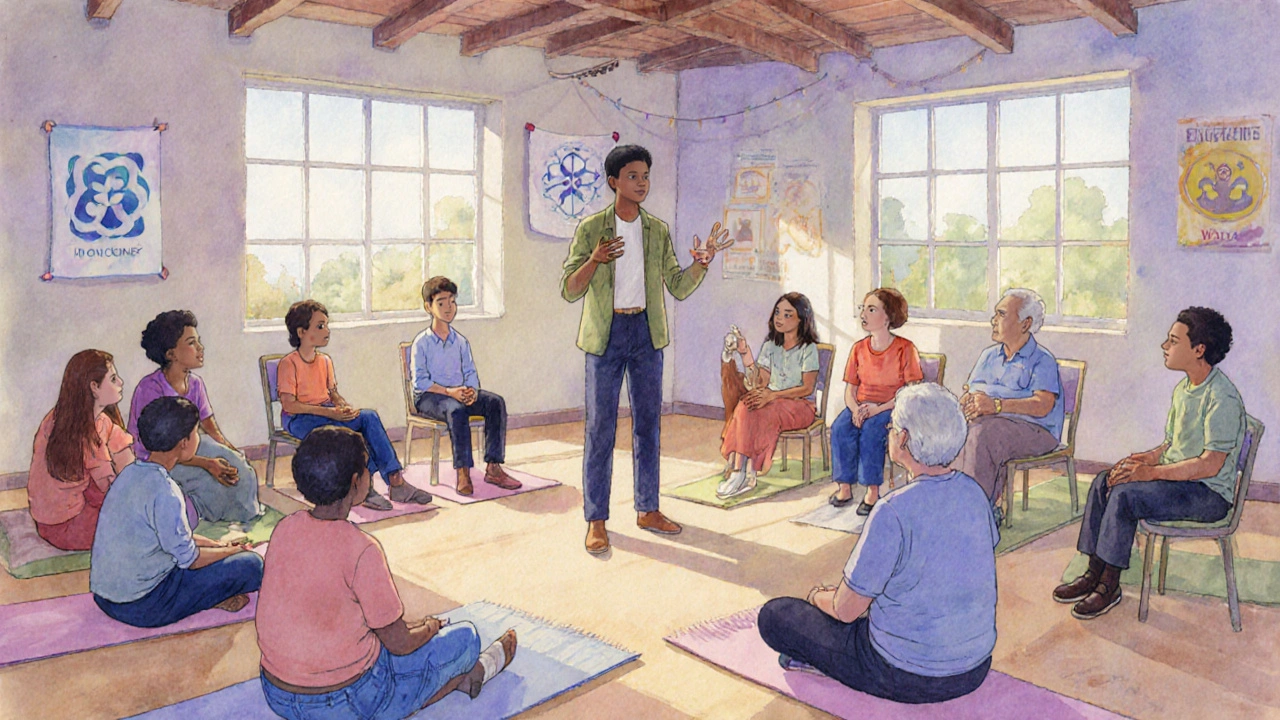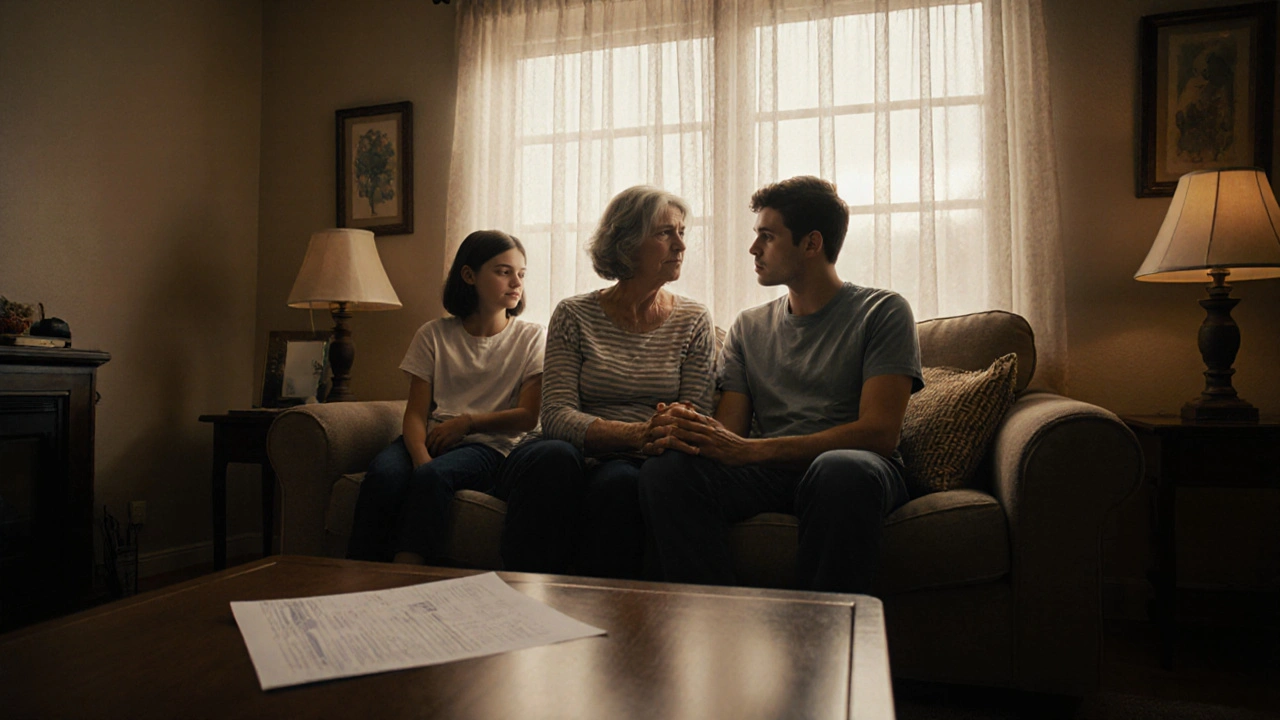When a family learns that a loved one has Leprosy is a chronic infectious disease caused by Mycobacterium leprae, the ripple effects can touch every corner of daily life. From medical appointments to social whispers, families often wonder where to turn for reliable leprosy support. This guide breaks down the disease’s impact on households, points you toward practical resources, and offers tips for coping with stigma.
What Leprosy Means for a Household
Leprosy primarily affects the skin, peripheral nerves, and mucous membranes. In 2023, the World Health Organization (WHO) reported roughly 150,000 new cases worldwide, with a significant share in low‑income regions. While the bacterium itself is not highly contagious, delayed diagnosis can lead to permanent nerve damage, blindness, and deformities. For families, the challenges extend beyond health:
- Lost work days as the patient travels for treatment.
- Extra caregiving duties, especially for children or elderly relatives.
- Emotional strain from fear of social rejection.
Understanding these layers helps families plan realistic steps rather than reacting in panic.
Medical Treatment Options and How to Access Them
The cornerstone of cure is Multidrug Therapy (MDT) a combination of dapsone, rifampicin, and clofazimine administered over 6‑12 months. Since 1991, WHO has supplied MDT free of charge to endemic countries, dramatically reducing disease prevalence. Here’s what families need to know:
- Find the nearest National Leprosy Programme government‑run service that coordinates diagnosis, treatment, and follow‑up through local health clinics.
- Ask the clinic for a treatment schedule and any required blood tests; side‑effects are usually mild but should be monitored.
- Confirm that the medication is part of the WHO‑provided MDT pack to avoid unnecessary costs.
If you live outside a high‑burden country, NGOs often bridge the gap. The Leprosy Mission an international charity that supports treatment delivery and community education can help arrange shipping of MDT and connect you with tele‑health specialists.
Beyond Pills: Psychosocial Support Services
Medical cure does not automatically erase the emotional fallout. Research from the International Journal of Leprosy (2022) shows that 40% of affected families experience anxiety or depression during the first year of treatment. To address this, look for:
- Mental Health Support counselling groups, either in‑person or virtual, led by trained psychologists - many NGOs offer free sessions.
- Peer‑support networks where former patients share coping strategies; the WHO maintains an online forum for such exchanges.
- School‑based awareness programmes that protect children’s education and reduce bullying.
Combining medical and psychosocial care yields the best outcomes - a fact highlighted in a 2024 WHO technical brief.

Comparison: Medical Treatment vs. Psychosocial Support
| Aspect | Multidrug Therapy (MDT) | Psychosocial Support |
|---|---|---|
| Primary Goal | Eliminate bacteria | Reduce stigma & mental distress |
| Provider | Clinics, national programmes, WHO | Counsellors, NGOs, peer groups |
| Duration | 6‑12 months | Varies; often ongoing |
| Cost to family | Free (MDT)+transport | Often free; some require donation |
| Measurable outcome | Bacterial clearance | Improved quality‑of‑life scores |
Dealing with Stigma: Practical Strategies
Stigma remains the biggest barrier to reintegration. Here are three proven tactics:
- Education campaigns: Host community talks using easy‑to‑understand visuals from WHO’s “Stop Stigma” kit.
- Family advocacy: Encourage the patient’s story (with consent) to be shared in local media, normalising the condition.
- Legal awareness: In many countries, anti‑discrimination laws protect workers with leprosy; the International Labour Organization provides guidelines on workplace rights for people with infectious diseases can be a reference point.
When families actively confront myths, neighbours tend to respond with curiosity rather than fear.

Step‑by‑Step Checklist for Families
- Confirm diagnosis with a qualified clinician.
- Register with the National Leprosy Programme.
- Obtain the WHO‑provided MDT pack.
- Set up a weekly medication reminder system.
- Identify a local or online mental‑health support group.
- Contact an NGO (e.g., The Leprosy Mission) for transportation vouchers.
- Arrange a family meeting to discuss caregiving duties and protect children’s schooling.
- Participate in community education sessions to reduce stigma.
Following this list keeps medical and emotional care aligned, preventing gaps that could delay recovery.
Building a Sustainable Support Network
Long‑term wellbeing hinges on reliable connections. Start by mapping out:
- Healthcare contacts - doctor, nurse, programme officer.
- Community allies - religious leaders, teachers, local council members.
- Financial resources - government disability benefits, NGO grants, charity funds.
- Information hubs - WHO’s leprosy portal, national health ministry websites.
Once the map is complete, schedule monthly check‑ins with each stakeholder. Over time, the network becomes a safety net that catches any unforeseen hurdles.
Frequently Asked Questions
Is leprosy still contagious?
Leprosy spreads mainly through prolonged close contact with untreated patients. Effective MDT reduces infectiousness within weeks, making transmission very unlikely after treatment begins.
Can my child attend school while a family member is on treatment?
Yes. WHO and most ministries of education state that children are safe to attend school. Encourage teachers to be aware of the situation so they can provide any needed accommodations.
What financial help is available for families?
Many countries offer disability allowances for leprosy‑related impairments. NGOs like The Leprosy Mission also provide transport vouchers and small cash grants for low‑income households.
How long does MDT take to cure the disease?
Standard MDT regimens last 6‑12 months, depending on the disease classification (paucibacillary vs. multibacillary). Most patients show complete bacterial clearance by the end of the course.
Where can I find mental‑health counselling?
Start with the National Leprosy Programme’s referral list. International NGOs often run free telephone hotlines; the WHO leprosy portal also publishes a directory of accredited counsellors.


Comments (13)
Zach Yeager October 12 2025
We gotta remember that a strong nation looks out for its own, and that means making sure families dealing with leprosy get the help they need without waiting for foreign aid. The government should fund transportation vouchers and set up local clinics so nobody has to travel miles for MDT. Even a short public service announcement can cut down the stigma that keeps people locked inside their homes. When the community rallies, it shows the country cares about every citizen, sick or healthy. So push for more domestic resources and keep the help close to home.
Angel Gallegos October 14 2025
While the sentiment is noble, the execution often suffers from a lack of precision. The guide should specify exact agency contacts, not just vague "local clinics". Moreover, the author neglects to cite the latest WHO 2024 brief, which would add credibility. Grammar-wise, the list formatting is inconsistent; bullet points should be uniform. Overall, a more rigorous approach would benefit readers seeking actionable steps.
ANTHONY COOK October 16 2025
Yo, real talk – dealing with leprosy ain’t just about pills, it’s the daily grind of keeping the fam together 😅. Got a buddy who’s on MDT and the stress was insane until they found a peer‑support group online. That forum’s been a lifesaver, especially when the local clinic was slow to respond. If you’re stuck, hit up The Leprosy Mission, they ship meds and even set up virtual counselling. Stay strong, keep the convo going, and don’t let the whispers win.
Sarah Aderholdt October 18 2025
Support networks really make a difference; a brief check‑in can catch a worsening symptom before it spirals. It also helps kids feel safe at school when they know the family has a plan. Simple steps like a shared calendar for meds can relieve a lot of anxiety. The key is staying proactive rather than reactive.
Phoebe Chico October 21 2025
Consider the broader canvas of human experience when confronting leprosy – it is not merely a clinical challenge but a profound societal narrative. The stigma attached to the disease mirrors the shadows we cast upon any perceived imperfection, a reflection of collective fear. By weaving education into everyday dialogue, we transform whispers into informed discourse. The act of sharing stories, with consent, becomes a bridge from isolation to community solidarity. Colorful metaphors can illuminate the path, turning the clinical jargon into relatable tales. As cultural ambassadors, we have the duty to paint empathy across borders, using vivid language that resonates. The family’s journey, when narrated with honesty, can dismantle myths that have lingered for centuries. Let us not shy away from the uncomfortable truths, but rather embrace them as catalysts for change. In doing so, we honor the resilience of those affected and uplift the communal spirit. The synergy of medical treatment and psychosocial support paints a holistic portrait of healing.
Larry Douglas October 23 2025
First, the Multidrug Therapy (MDT) regimen is scientifically validated and has been the cornerstone of leprosy eradication for decades. Second, the WHO’s provision of free medication eliminates direct pharmaceutical costs for families, which is a critical economic relief. Third, the logistical challenge of transporting patients to treatment centers can be mitigated through partnerships with local NGOs that offer vouchers or shuttle services. Fourth, it is essential to monitor hematologic parameters regularly, as certain components of MDT may cause mild cytopenias. Fifth, patient adherence improves dramatically when reminder systems, such as weekly SMS alerts, are implemented. Sixth, the psychosocial dimension should not be an afterthought; mental health counseling reduces the incidence of depression by approximately 40 percent, according to 2022 studies. Seventh, peer‑support groups provide experiential knowledge that complements clinical advice. Eighth, schools can adopt anti‑stigma curricula, which have shown to reduce bullying incidents within affected families. Ninth, legal frameworks in many jurisdictions protect workers from discrimination based on infectious disease status, and families should be informed of these rights. Tenth, financial assistance programs, including disability allowances, can be accessed through national health ministries. Eleventh, community leaders, such as religious figures, often wield influence that can be harnessed to disseminate accurate information. Twelfth, ongoing surveillance by national leprosy programs helps track treatment outcomes and prevent relapses. Thirteenth, integrating tele‑health consultations expands specialist access, especially in remote areas. Fourteenth, documentation of treatment progress should be maintained in a personal health record accessible to both patients and caregivers. Fifteenth, evaluating quality‑of‑life scores before and after intervention offers measurable insight into the efficacy of psychosocial support. In sum, a comprehensive, multi‑faceted approach that combines medical, logistical, legal, and emotional strategies yields the most robust outcome for families confronting leprosy.
Michael Stevens October 25 2025
Great breakdown! I’d add that setting up a shared digital folder for all appointment notes and medication schedules can keep everyone on the same page, especially if multiple caregivers are involved. It also eases communication with healthcare providers.
Ann Campanella October 28 2025
Sounds like a solid plan.
Desiree Tan October 30 2025
Absolutely, and don't forget to push the family to claim any available disability benefits – those little subsidies can ease the financial strain dramatically. Also, a quick call to local NGOs can sometimes net you a free transport voucher that nobody mentions in official guides.
Andrea Dunn November 1 2025
Did you ever notice how every time a disease like leprosy gets attention, there’s a sudden surge of hidden agendas? The pharma lobby loves to keep the narrative alive because it justifies their endless supply chain. Meanwhile, the mainstream media conveniently drowns out any mention of the true cost of free medication programs, which actually drain tax dollars.
Erin Johnson November 4 2025
Oh, you’ve cracked the code, Andrea – the secret battle of pharma is definitely in the shadows! 😉 But seriously, the WHO’s free MDT is a genuine triumph, and the conspiratorial angle distracts from real progress. Let’s keep the focus on expanding genuine community outreach instead of chasing phantom plots.
Rica J November 6 2025
Actually, the guide could use a quick tip: most national leprosy programmes have a hotline you can call after hours. It’s not always listed on the website, but a quick search for "Leprosy program contact" plus your country name usually pulls up a number. Also, don’t forget to double‑check the expiry date on the MDT pack – you don’t want to be stuck with outdated meds.
Linda Stephenson November 8 2025
Thanks for the practical pointers! I’ll make sure to add the hotline detail to the checklist – it could be a lifesaver for families who need urgent advice outside of normal clinic hours.